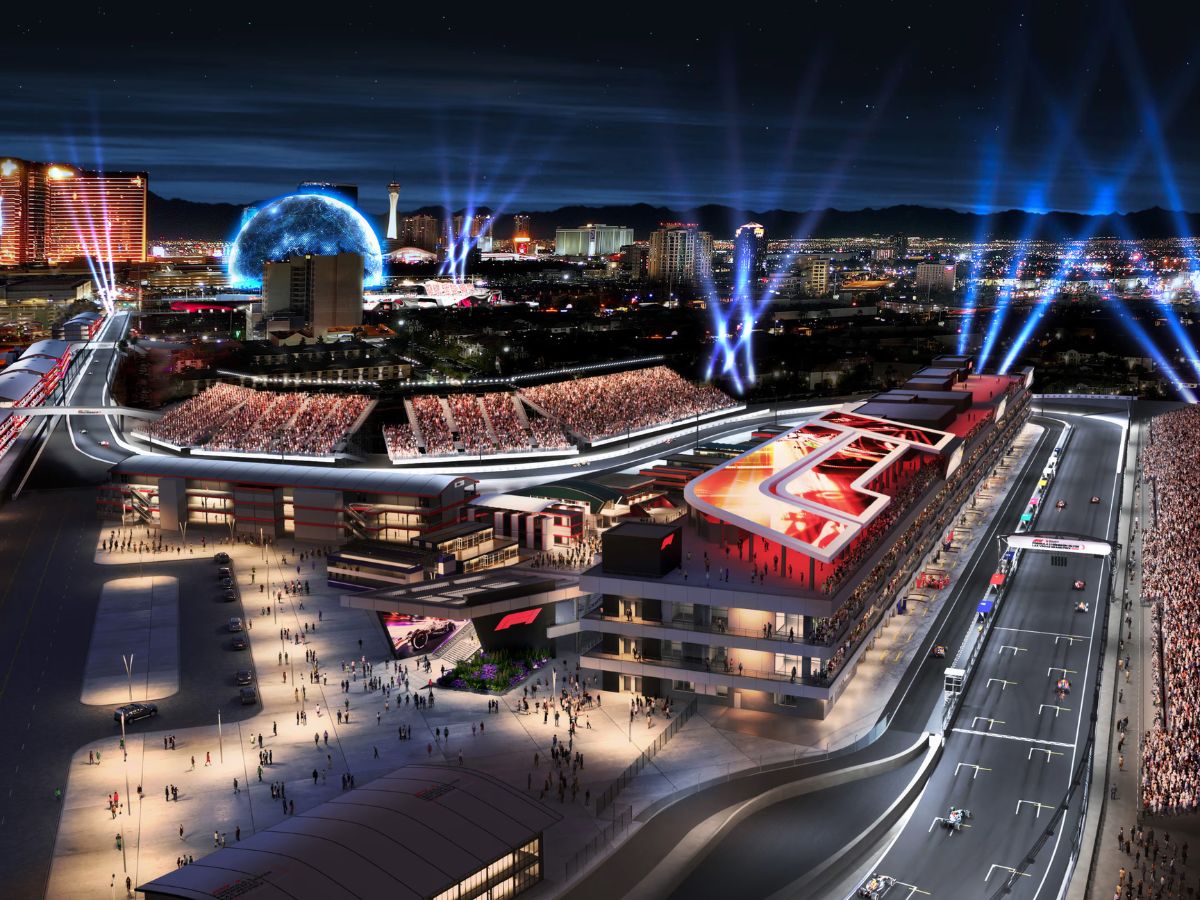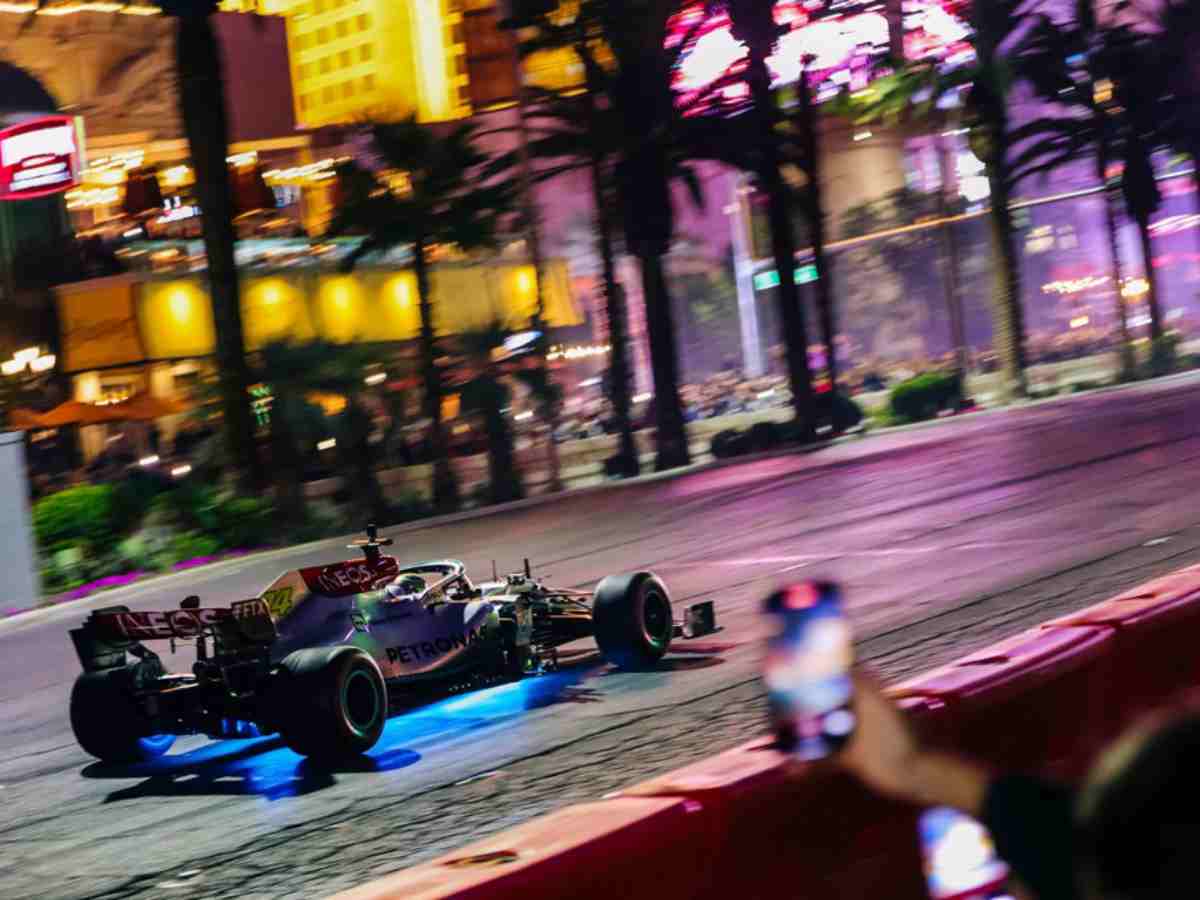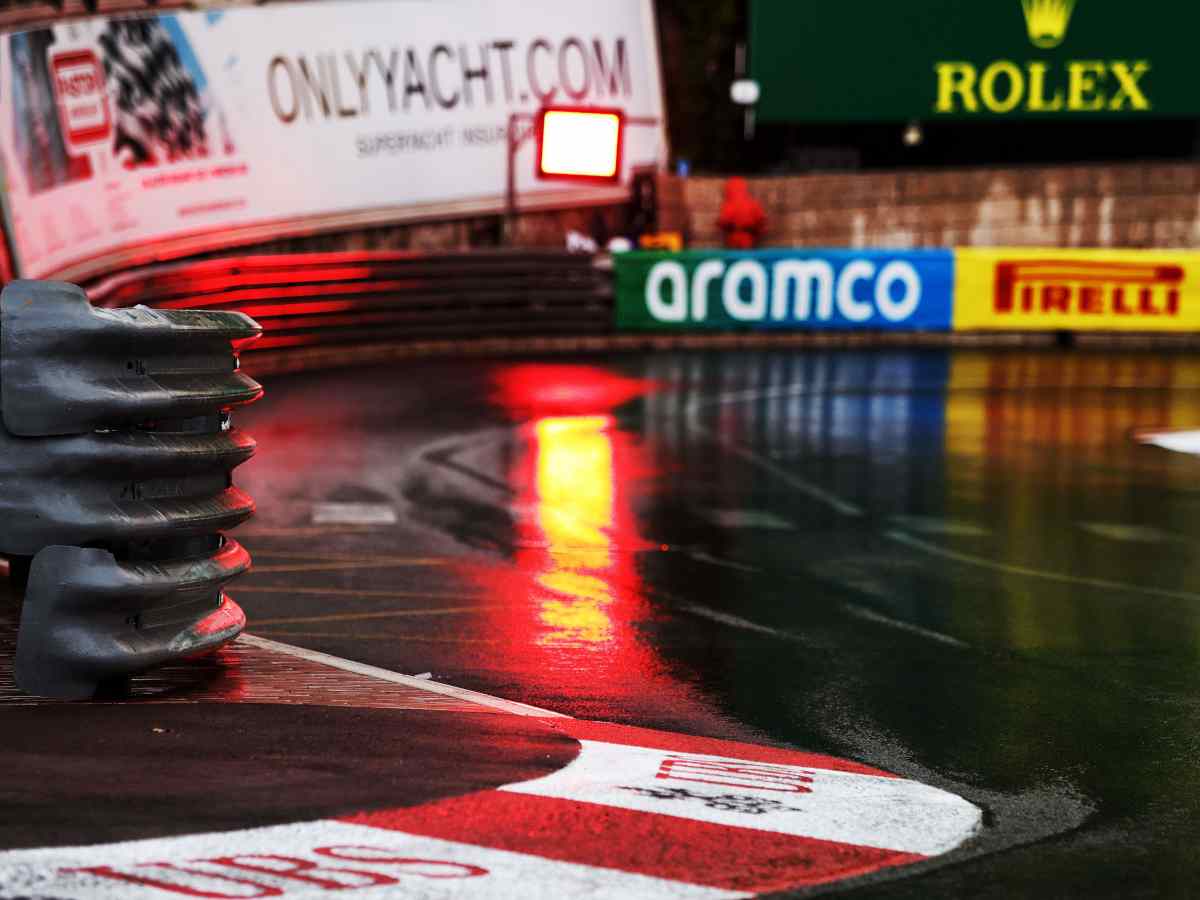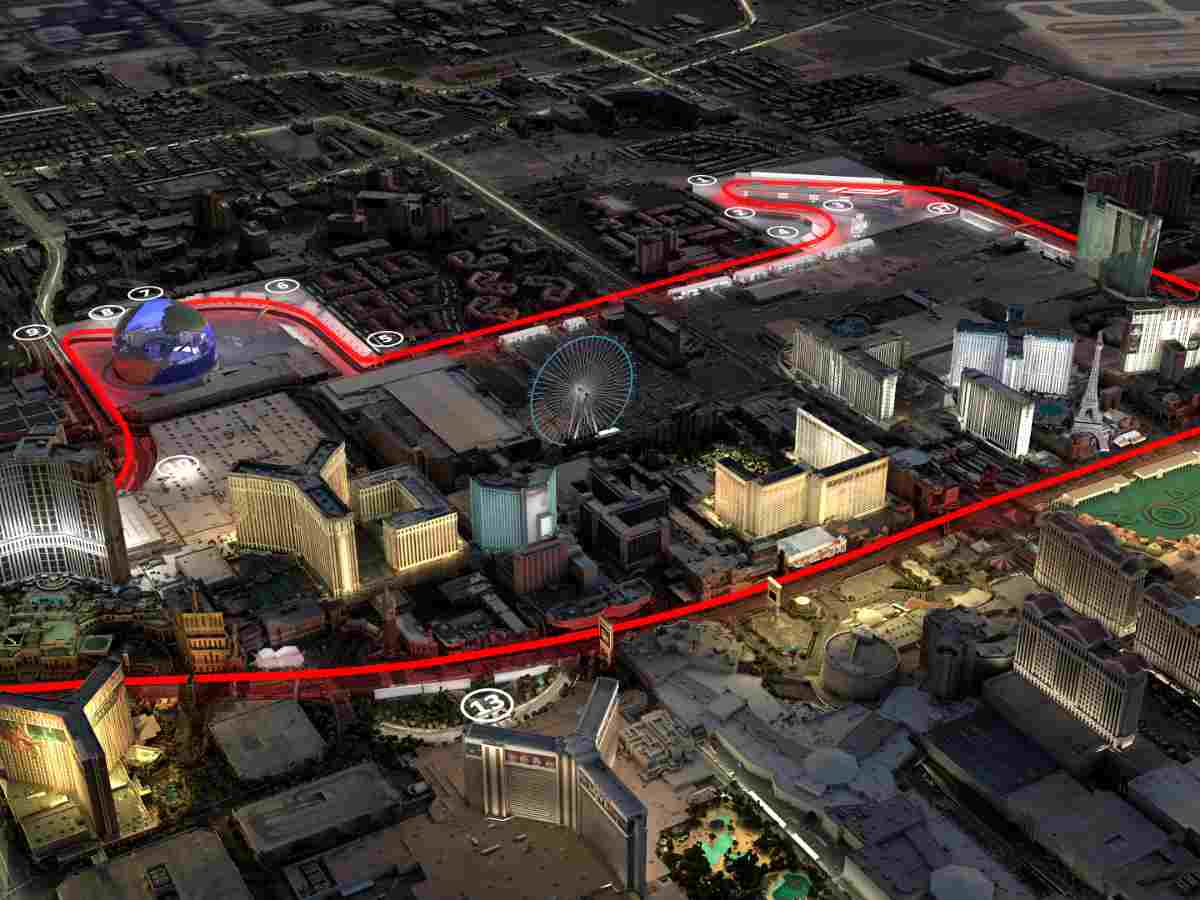How long will the F1 race in Las Vegas last?
The last time US hosted three races in one calendar year is back in 1982, which was also the last time F1 raced in the Sincity.

Las Vegas GP track (Credits: F1)
🔍 Explore this post with:
In the glittering heart of Las Vegas, where the city’s iconic streets transform into a thrilling F1 circuit, the 2023 Las Vegas GP promises to be a historic night race under the dazzling lights of famous landmarks, hotels, and casinos. However, the question on everyone’s mind is, “How long will the Las Vegas GP last?” Delve into the details of the track, predicted lap times, and the unique challenges presented by the race conditions.
The Las Vegas GP is going to be a night race that will take place on a 3.8-mile street circuit in the heart of Las Vegas, passing by iconic landmarks such as Caesars Palace, the Bellagio, and the Venetian. The inaugural race will occur on November 18, 2023, and the contract has been extended through 2032. The track features 14 corners, three straights, two DRS zones, and 50 laps of excitement.
What does the math project for the Las Vegas GP duration going to be?
Predicting lap times for this challenging circuit is no easy feat. Based on the F1 23 console game, top lap times are expected to be just over “1 minute and 33 seconds.” However, the night race conditions with ambient temperatures between five and ten degrees Celsius pose an additional challenge. Getting tires up to temperature becomes trickier, potentially impacting lap times and overall race dynamics.

Considering the predicted lap time of 1 minute and 33.5 seconds and factoring in the variable of 50 laps, we estimate that the race would last approximately 77.915 minutes (rounding it off to 80 minutes). Every F1 race is designed to be around 80 to 90 minutes. However, this can be altered due to the race stoppages such as a Safety Car or Red Flags. While also considering the pitstops, the race is projected to be around 90 minutes.
This can be done in a different approach as well, by considering the average speed of the car around the track and the race length (total tace distance covered). The race length of the Las Vegas GP is around 310.050 km (192.656 miles). According to the simulations, the average lap speed is projected to be around 147 miles per hour (237 kmph), with the top speed stretching to 212 mph (342 kmph).
“try to clip late on the club, not the diamond at corner 4”
— Luis Manuel López (@chacho_lml) November 9, 2023
Las Vegas GP pic.twitter.com/HkzhiKYAnN
By this consideration, with the expected average speed of 147 miles per hour and a total race distance of 192.656 miles, the race is anticipated to take approximately 1.311 hours. To break it down further, this translates to around 78.66 minutes or approximately 80 minutes. Thus, by raw mathematical calculation, the race is predicted to be of 80 minutes. However, this, too, cannot be stated as the exact duration as many variables will affect it.
What are the variables that affect an F1 race duration?
Weather Conditions
The duration of a race is profoundly affected by weather conditions. In heavy rain or unsafe track conditions due to wet weather, races may experience delays or start behind the safety car. Rain delays are limited to 1 hour, and the race is completed if two green-flag laps are done. Accident suspensions pause the clock, and the total race time is capped at 3 hours. However, the weather forecast is predicted to be clear skies.

Accidents and Incidents:
Crucial race incidents can significantly impact the duration. Major crashes or multiple incidents may prompt safety car deployment or a red flag, leading to pauses or stoppages. Additionally, track clean-up is essential if debris or fluids from an accident pose safety risks. The stoppage for the cautions is similar to the rain delays.
Tyre wear and Pitstops:
Tyre wear necessitates strategic pitstops for fresh rubber, impacting race duration. Teams plan stops, balancing speed and tire life. Unplanned stops or prolonged wear can alter the race dynamics, requiring adjustments. Efficient pit strategies enhance performance, while miscalculations may extend pit time, influencing the overall duration and competitive landscape of the race. The track layout and the surface also effect the tire wear, dive in to learn about the Las Vegas GP track.
Las Vegas GP track overview
The Las Vegas F1 track, a 6.1km circuit winding through the city’s bustling streets, presents a formidable challenge to drivers. The race will be 50 laps of excitement and one of the fastest tracks on the calendar. Predictions indicate that almost 85% of the lap will be at full throttle, thus mirroring the iconic Monza circuit.

Starting in a revamped car park turned entertainment zone; the race unfolds with an intense left-hander. The track weaves through diverse elements—sweeping curves, straights, and chicanes. Notable is Koval Lane, a 1km straight culminating in a 90-degree turn, showcasing the dazzling 112m-tall Sphere adorned with LED lights. The cars will then slow down at the chicane near Sands Avenue.
The highlight of the Las Vegas Grand Prix is undoubtedly the stretch down The Strip, where cars race side-by-side, reaching speeds of around 342kph. This section offers breathtaking views of neon lights and landmarks, creating a unique and exhilarating experience for drivers and spectators. However, a chicane between Planet Hollywood and the Cosmopolitan slows down the cars before they accelerate onto East Harmon Avenue, setting the stage for another lap.
I’m just casually driving down the Las Vegas GP circuit ?️? pic.twitter.com/66WrXYRMqb
— Andrew Vasquez (@_andrewracing) November 9, 2023
The late start time of the Las Vegas Grand Prix, commencing at 10 p.m., adds another layer of complexity to the event. The decision to host FP1 and FP3 in the evening while FP2 and Qualifying unfold in the early morning reflects the unique circumstances of organizing a race in the entertainment capital. Major streets must be closed off for the race, leading to logistical challenges that demand compromise and consideration of local stakeholders’ needs and preferences.
In case you missed it:







